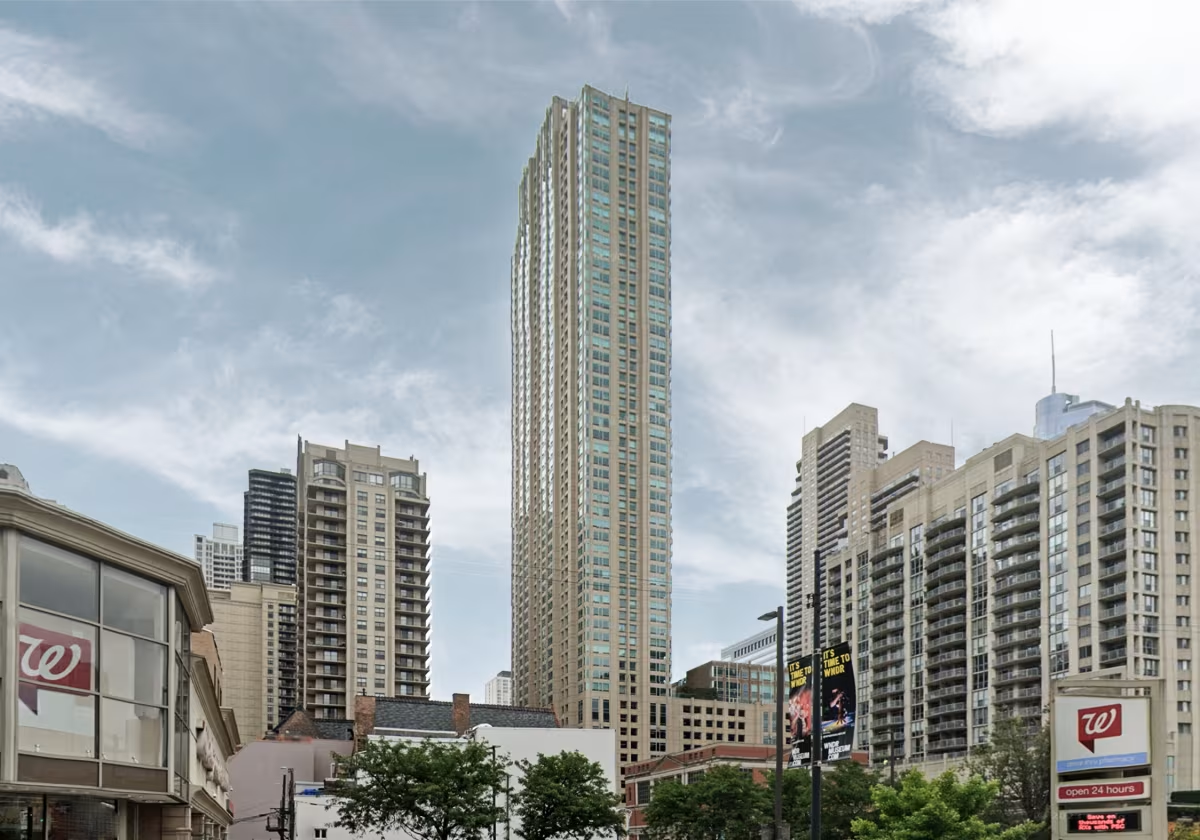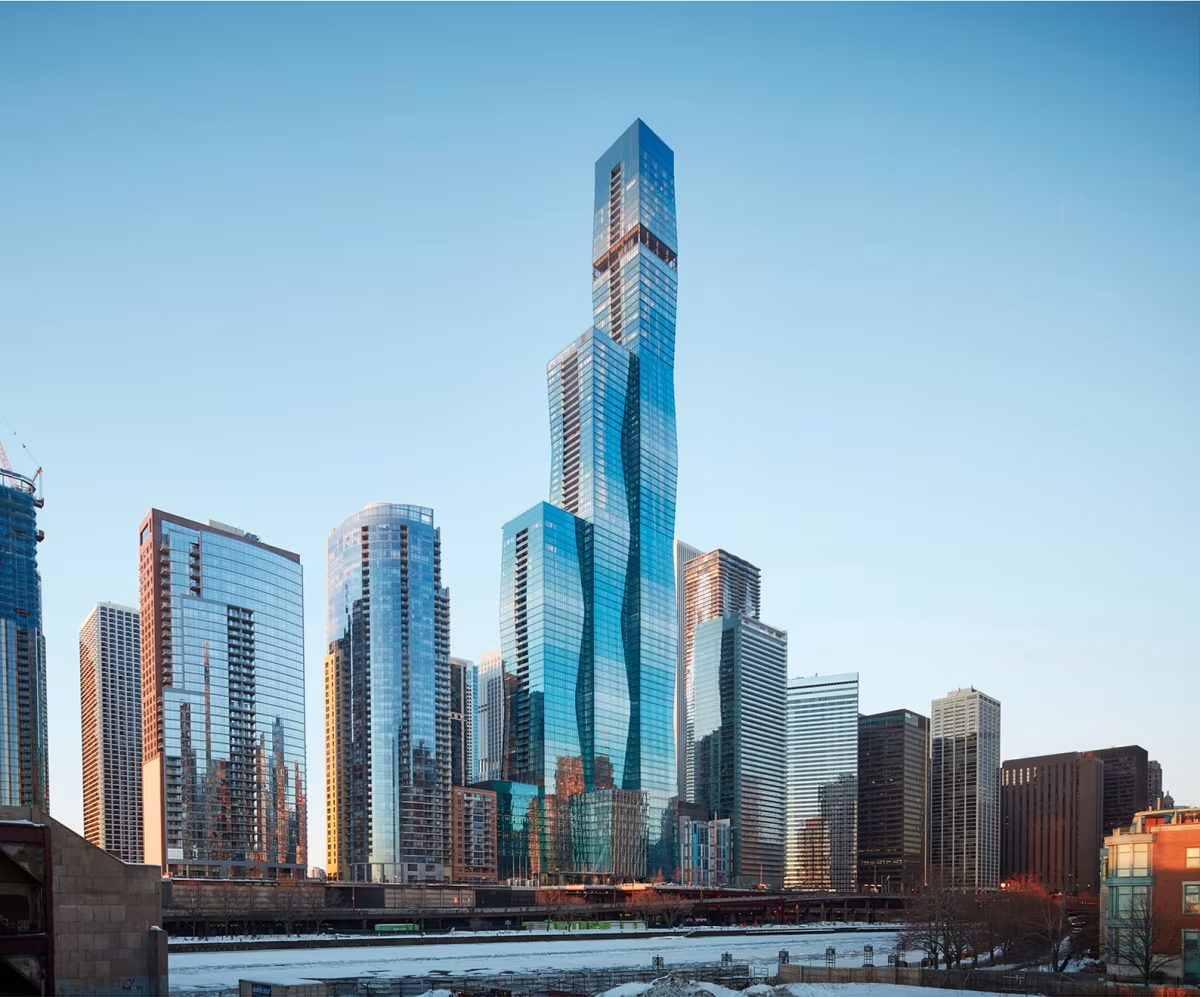Millennium Centre vs St. Regis Chicago


Comparing the Millennium Centre and the St. Regis Chicago is interesting because they both rise in Chicago, IL, yet they were conceived by two different design teams, Solomon Cordwell Buenz and Studio Gang Architects, and were completed at different points in time. They were finished more than a decade apart.
This contrast within the same city allows us to see how different creative minds interpreted the evolving needs of Chicago across time.
Let's take a closer look!
Height & Size
The St. Regis Chicago is clearly the larger tower of the two, both in terms of height and number of floors. It rises to 1194ft (364m) with 101 floors above ground, while the Millennium Centre reaches 610ft (185.9m) with 58 floors above ground.
Of course, each project may have faced different briefs or regulatory constraints, which we don't really know about and could also explain the outcome.
Architectural Style
Both the Millennium Centre and the St. Regis Chicago were designed in line with the aesthetic conventions of the Contemporary style.
At the time, this style was at the height of its popularity. So both Solomon Cordwell Buenz and Studio Gang Architects followed what was in many ways expected of them, producing designs that fit comfortably within contemporary architectural norms, rather than breaking with convention.
Uses
Both the Millennium Centre and the St. Regis Chicago were designed to serve as residential towers, and that has remained their main use since their completion, serving similar roles in the urban fabric.
The St. Regis Chicago incorporates a 5-star hotel with 192 rooms. More information is available at the official website.
In terms of capacity, the Millennium Centre offers 341 apartments, while the St. Regis Chicago provides 393 units.
Both towers provide significant parking capacity, with Millennium Centre offering 680 spaces and the St. Regis Chicago offering 295.
Structure & Facade
Both towers share the same structural solution, a Frame system.
A frame structure uses a grid of columns and beams to carry the building's loads. This frees the walls from structural duties, allowing for flexible floor plans and larger windows.
However, when it comes to the facade, both buildings use different approaches. The Millennium Centre uses a Modular facade, while the St. Regis Chicago uses a Curtain Wall facade.
A Modular facade like the one seen in the Millennium Centre employs prefabricated panels, often mixing solid surfaces with smaller windows, while a curtain-wall facade like the one seen in the St. Regis Chicago uses a lightweight glass curtain wall hung from the structure.
| Millennium Centre | St. Regis Chicago | |
|---|---|---|
| Solomon Cordwell Buenz | Architect | Studio Gang Architects |
| 2001 | Construction Started | 2016 |
| 2003 | Year Completed | 2021 |
| Contemporary | Architectural Style | Contemporary |
| Residential | Current Use | Residential |
| 58 | Floors Above Ground | 101 |
| 181.4 | Last Floor Height | 351 |
| 185.9 m | Height (m) | 364 m |
| 341 | Residential Units | 393 |
| Frame | Structure Type | Frame |
| Reinforced Concrete | Vertical Structure Material | Reinforced Concrete |
| Reinforced Concrete | Horizontal Structure Material | Reinforced Concrete |
| Concrete | Main Facade Material | Aluminum, Glass |
| American Invsco Contractor | Developer | Magellan Development Group |
| IL | State | IL |
| Chicago | City | Chicago |
| 33 West Ontario Street | Address | 363 East Wacker Drive |